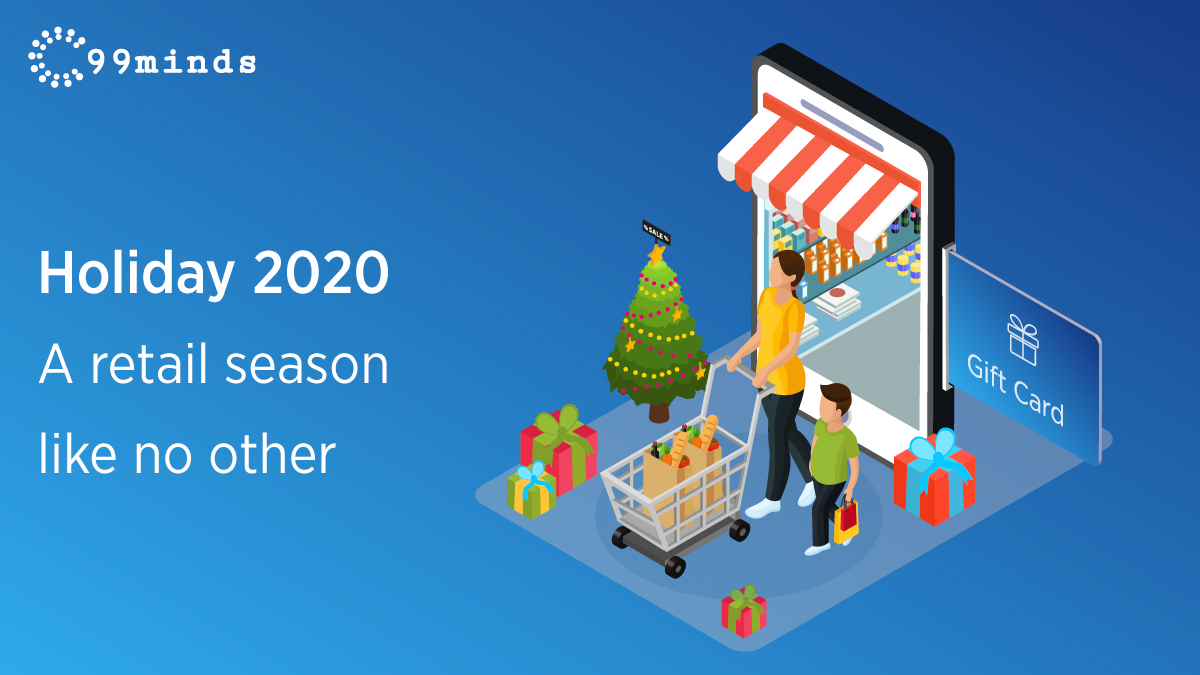
The strength of consumer spending this year isn’t clear. Thanks to the fear of a surge in Coronavirus infections, the uncertainty is enormous. Accenture’s 14th Annual Holiday Shopping Survey has a few ideas on how the US holiday season of 2020 will shape up.
Here’s what Jill Standish, the Global Retail Lead at Accenture, has to say about this year’s retail season-“2020 is shaping up to be a very ‘human’ holiday season for consumers, with a desire to support the people who have served our communities. There’s never been a more important time for retailers to be authentic to their purpose and transparent about what they’re doing to look after their employees and the wider community.”
The above statement couldn’t be truer. We live in uncertain times, millions of people worldwide have lost jobs, and there is an air of negativity. The festival season is a time when people will cling on to some hope to keep themselves and their families happy. A retailer who is not transparent at this juncture will face the wrath of its customers. They will lose their goodwill. Retailers need to understand that during tough times like this, customers will expect empathy from them.
No matter how much technology has entered our lives, we are dealing with humans at the end of the day. Retailers need to use this opportunity to show who they really are. Show everyone else how you treat your employees, how much you care about them, and how you helped them during the lockdown crisis. Your customers are going to spend less this year as Accenture’s report says that two in every five shoppers are planning to spend less than they did during the last holidays.
Owing to the pandemic, most customers are planning to shift online to make their holiday purchases. How strong is your digital infrastructure? Does your supply chain network allow for more online purchases than what is happening currently? The surge in eCommerce that we saw during the pandemic will certainly extrapolate to the holiday season as well.
Ensure that your supply chain networks are agile and flexible. Create a seamless digital customer experience. Do remember that there will be many customers who are going to be online shoppers for the first time. So it would be considerate if you could make the entire process of purchasing online to be extremely simple.
It means no direct contact with employees, delivery partners, or customers. The main objective of this is to ensure that the delivery of e-commerce goods (or anything for that matter) is done in a safe manner. As a retailer, it is your obligation to allay the fear of your customers by promising them contactless delivery options.
Most customers might not be aware of the fact that it will take more days than usual to get an online order fulfilled. While they know how disadvantaged retailers are when it comes to their delivery operations, customers do not want to see such a delay. What can retailers do in such a situation? You should use this opportunity (or challenge?) to make your customers purchase earlier than they would have planned to. Remember, a bad delivery experience will affect your chances of getting them as customers again. So, you should make it a point to provide an offer which will encourage them to shop early.
Most of your customers spend most of the day at their homes, and they are slowly reconnecting back to their communities. As a retailer, you should understand the local community’s equations, how it works, what matters to them, where are their favorite shopping destinations, and so on. Understanding their needs on a granular level will also put you in good stead. Use data and analytics to find out patterns and identify the hyper-localized demand to see through this time.

These are uncertain times, but if there is one aspect of your business that will still give you some respite is the data that you have of the sales in the last few months during the pandemic. Ensure that you have an analytics engine present that gives you the best solutions for your business.
If you can build a strong business with all these technological capabilities and combine it with your empathy towards all of your stakeholders, your customers will be able to connect with you. They will also be the ones encouraging you for the actions that you have taken. By being aware of what customers want and employees look forward to, you can weave magic for everyone involved. Once you keep doing it consistently, you will always be successful.
Customers have promised that they will shop only with brands that took care of its employees and partners. Also, providing them a frictionless experience while shopping online should be part of your agenda. Remember that your customers are staring at uncertainty, too, because of the nature of the pandemic, so you should be prepared for different consumer habits and spending patterns that might go completely against the grain.